Writer Joseph J. Airdo
Photography by Adrienne McLeod
[dropcap]J[/dropcap]ust as the colors of leaves signify the arrival of fall, the pretty plumage of many of our state’s desert birds creates a magnificent mosaic through which we can appreciate autumn in Arizona.
Many of these birds blend in with the landscape as a means of protection against predators, but those with a keen eye can experience an array of splendor just outside their window.
For starters, the barred black, white and brown feathers of our official state bird—the cactus wren—are a sight that those in other parts of the country may never have the fortune to see up close.
As is also the case with Gambel’s quail, whose beautiful bluish-gray bodies, cream bellies, chestnut wings, copper heads and black top-knots can be seen bouncing around the desert in groups called coveys of more than a dozen at a time.
If we are even more observant, we can even catch quick glimpses of dark brown- and white-streaked roadrunners with their distinctive spiky head crests and colorful bare patches of skin behind each eye.
From hawks to owls to woodpeckers, our state is home to many fascinating birds whose feather color schemes are a terrific representation of autumn in the desert.
Arizona even features three species of wild turkeys—the unofficial stars of November due to their association with the Thanksgiving holiday. However, you will have to travel to the farther reaches of our state in order to see them, as they are typically located in the ponderosa pine forest and other vegetation types in elevations ranging from 3,500 to 10,000 feet.
Photographer Adrienne McLeod counts herself very lucky to have seen and photographed so many of these dazzling desert birds.
This month, in celebration of the season, Images Arizona magazine is proud to share with our readers a small sample of the fall feathers that McLeod has captured over the past three years as she has hiked our state’s trails in search of these and other creatures.
Where to Catch a Glimpse
Photography works hand-in-hand with her other hobby—hiking through Arizona’s various nooks and crannies. She embarks on hikes almost every weekend, camera in hand, to enjoy the outdoors and document the interesting plants, animals and scenery that she encounters.
Having grown up in Tucson, one of McLeod’s favorite areas to hike and photograph is Seven Falls. For birding, she enjoys Ramsey Canyon Preserve and Sweetwater Wetlands—the latter of which is home to many ducks and herons. However, her favorite trail is always the one that she is hiking at any given moment.
“I am always trying to find a new place to hike,” McLeod explains. “I just feel at peace outside. I do not necessarily like the company of too many other people. I feel a sense of quiet out in nature that I do not get in the city.”
Capturing the Shots
“Cornell Laboratory has some apps that are good to help find where birds might be,” McLeod says. “As far as the camera goes, I generally try to bump up the shutter speed to at least 1/1,000th of a second, have a mid-range f-stop and keep the ISO fairly high.
“I just make sure that I am able to take a lot of pictures at once on repeat fire. But it is just luck of the draw sometimes.”
When it comes to her photography, McLeod is less concerned about the technical aspects that many other photographers focus on than she is with simply getting the shot.
“I do not really put too much thought into the creative process,” says McLeod, noting that she is self-taught outside of that high school club all those years ago.
“Generally, I just document anything interesting that I see. I just like pretty things.”
About the Photographer
Adrienne McLeod’s first entered the world of photography when she was in high school, when she approached her teacher with the idea of starting a photography club.
“I just loved art and wanted to expand my horizons a little bit,” McLeod says. “I did not know too much about it, but my teacher was pretty familiar with the process. So we got a few students together, started a club and began learning all of the technical details of photography.”
McLeod initially used her mother’s old Nikon camera for her hobby, spending a lot of time outdoors photographing nature. She eventually updated her instrument and has been playing with the art form off and on since then—until about three years ago when she decided to get a bit more serious about it.
Let’s Talk Turkeys!
Arizona is thankful to be home to three species of wild turkeys: Merriam’s turkeys, Gould’s turkeys and Rio Grande turkeys.
Of the three, Merriam’s turkeys—a native species—are most plentiful in our state and are most frequently found in the ponderosa pine forests north of the Gila River, with strong population densities along the Mogollon Rim. Merriam’s turkeys feature primary wing feathers that are white with small black accents.
Arizona’s other native wild turkey species, Gould’s turkeys, are far less common, having experienced dramatic population declines over the years. Slightly larger than Merriam’s turkeys, Gould’s turkeys were an important food source for miners working in southern Arizona between the Civil War and World War I. The few that are left stick to the isolated high-altitude forests and remote mountain ranges of our state.
Meanwhile, Rio Grande turkeys are a slightly smaller species with primary wing feathers that are black with small white accent bars. Rio Grande turkeys tend to occupy areas up to 6,000 feet in elevation with drainages and stream beds in relatively open brush.

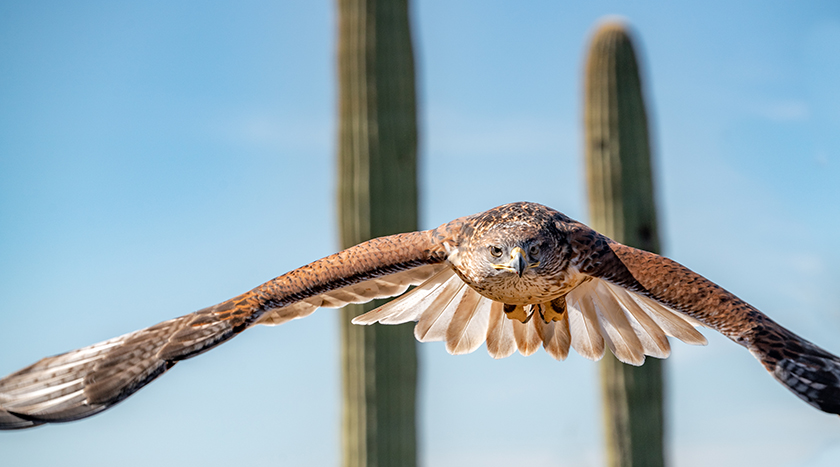

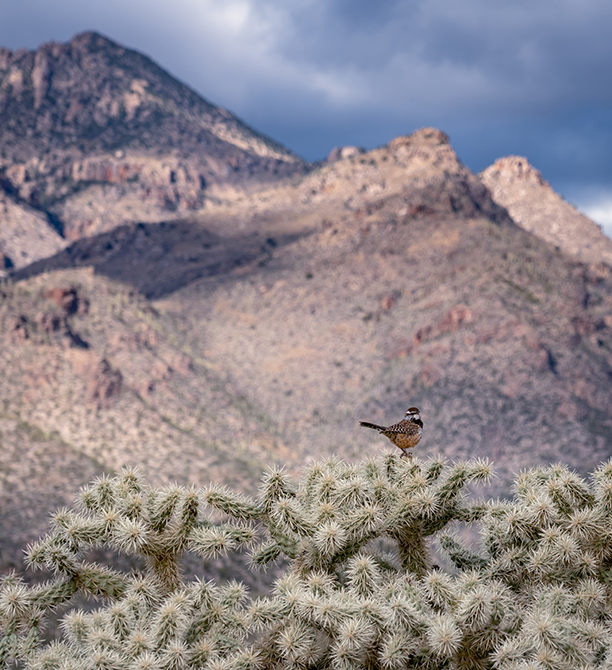
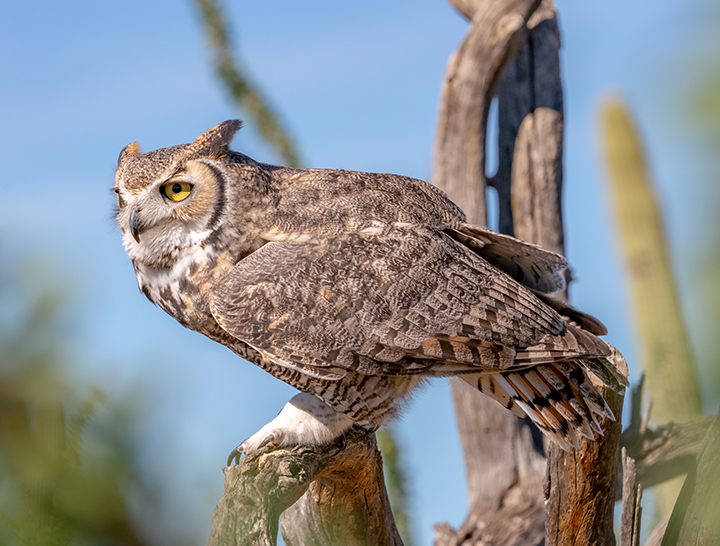
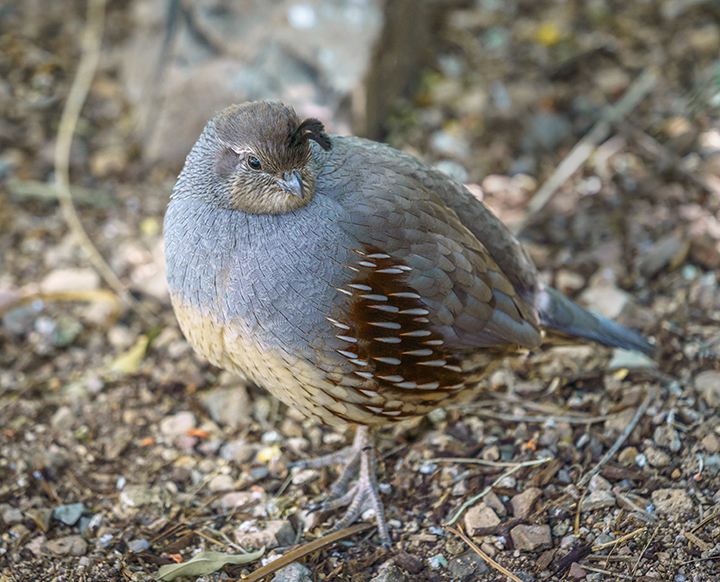
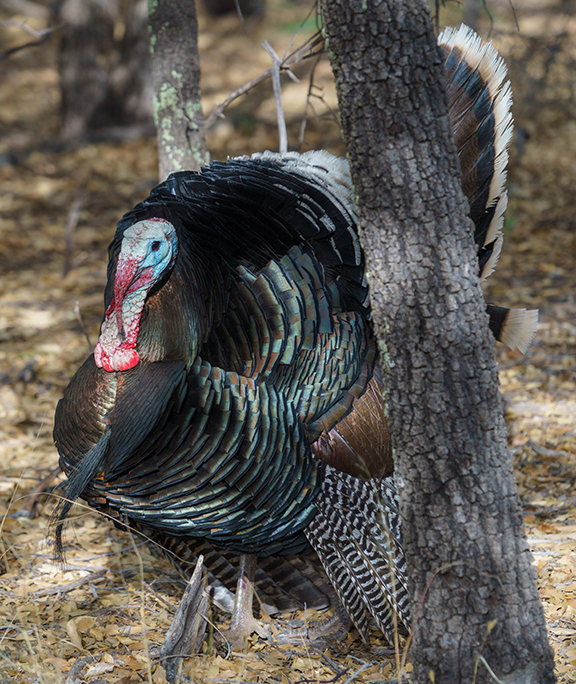





Comments by Admin